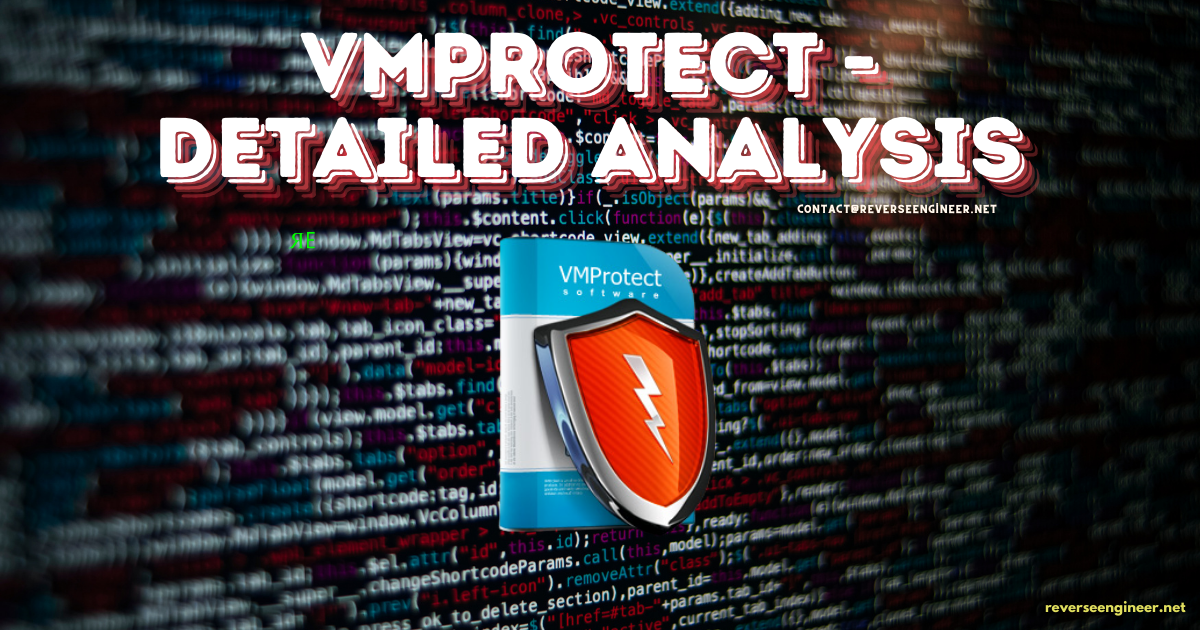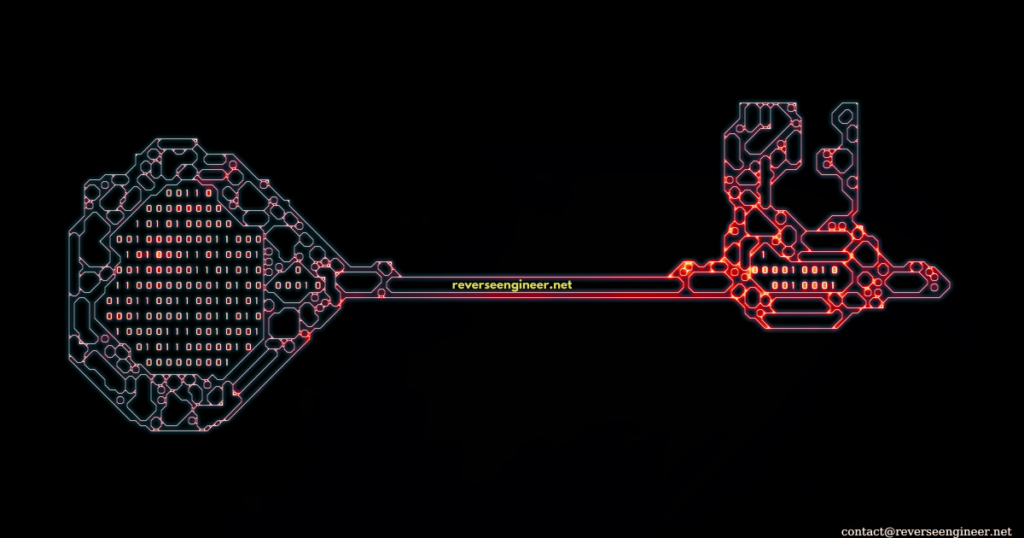
The Challenge of VMProtect
A few months ago, we were approached by several clients with a common problem: analyzing and reverse-engineering VMProtect-protected software was taking too long and yielding inconsistent results.
For those unfamiliar, VMProtect is one of the most advanced software protection systems, used by developers to prevent reverse engineering, cracking, and debugging. It replaces x86 instructions with custom virtual machine (VM) bytecode, making static analysis almost impossible.
Our clients needed to:
✔ Understand how VMProtect was securing software binaries.
✔ Analyze VMProtect-protected applications without spending hours on manual devirtualization.
✔ Find a way to automate the devirtualization process across all VMProtect versions.
We realized that the existing manual approaches were inefficient. So, we built an automated tool that could analyze, extract, and reconstruct VMProtect-protected binaries—turning days of manual work into minutes of automated processing.

What Makes VMProtect So Hard to Reverse Engineer?
VMProtect is designed to make static and dynamic analysis extremely difficult through a combination of advanced protection techniques. These include:
1️⃣ Code Virtualization
Instead of executing native x86 instructions, VMProtect replaces them with custom virtual machine opcodes. Each time a binary is protected, it creates a unique virtual instruction set, making it different from one application to another.
2️⃣ Control Flow Obfuscation
VMProtect injects junk code, fake branches, and opaque predicates, making it hard to reconstruct the original logic.
3️⃣ Anti-Debugging & Anti-Tampering Mechanisms
- VMProtect detects debuggers like IDA Pro, x64dbg, and Ghidra and prevents code analysis.
- It implements anti-emulation checks that detect virtualized environments.
- Memory breakpoints and anti-hooking mechanisms block common reverse engineering techniques.
4️⃣ Rolling Decryption Mechanism
Each execution generates a new decryption key, preventing static analysis of encrypted instructions.
These protections make VMProtect extremely difficult to bypass manually—which is why we needed an automated solution.

Before Our Tool: Manual VMProtect Bypass Techniques
Before we developed our automated devirtualization tool, researchers and hackers relied on several manual techniques to bypass VMProtect.
📌 1. Static Analysis & VM Handler Mapping
- Reverse engineers manually extract VM handler tables using IDA Pro, Ghidra, or Radare2.
- They analyze the opcode-to-instruction mapping for each protected binary.
📌 2. Dynamic Tracing & Decryption
- Frida & DynamoRIO can trace execution and extract decryption keys dynamically.
- This approach requires constant manual intervention to track encrypted instructions.
📌 3. Binary Translation & Devirtualization
- Tools like NoVmp and VTIL (Virtual-machine Translation Intermediate Language) help translate VMProtect bytecode back into x86 assembly.
- However, devirtualization has to be done case-by-case, requiring custom scripts for different VMP versions.
While these techniques work, they are:
⏳ Extremely time-consuming (sometimes days or weeks for a single binary).
❌ Prone to errors, as each version of VMProtect uses different VM instruction sets.
📉 Not scalable, making them impractical for large-scale analysis.
Our Breakthrough: A Fully Automated VMProtect Devirtualization Tool
To solve these challenges, we developed an advanced tool that automates the entire devirtualization process across all VMProtect versions.
This tool eliminates manual intervention, allowing security researchers, reverse engineers, and analysts to devirtualize VMProtect-protected software in minutes instead of hours or days.
How Our Tool Works
1. Identifying & Extracting VM Handlers
- Our tool automatically locates the VM handler table inside any VMProtect-protected binary.
- It dynamically maps each opcode to its corresponding native x86 instruction.
2. Automated Decryption & Deobfuscation
- Instead of manually extracting decryption keys, our tool traces execution and extracts rolling keys in real time.
- It bypasses opaque predicates, deadstore obfuscation, and encrypted control flow structures automatically.
3. Reconstructing the Original Code
- Using binary translation techniques, our tool rebuilds the original x86 instructions from the virtualized bytecode.
- The final output is a fully devirtualized binary, ready for further analysis.
Real-World Test: Devirtualizing a VMProtect-Protected Binary
To demonstrate our tool’s capabilities, we tested it on a highly obfuscated VMProtect 3.x protected application.
Step 1: Analyzing the Binary
- Our tool automatically identified the VM handler table and mapped the custom VM instructions to their native x86 equivalents.
Step 2: Extracting Decryption Keys & Deobfuscating Code
- Instead of manually tracking execution, our tool traced the binary in real-time and extracted decryption keys dynamically.
Step 3: Reconstructing the Original Code
- Once all transformations were applied, the tool produced a clean, readable x86 assembly output—fully devirtualized!
What previously took hours or days of manual work was completed in just a few minutes.
Why Our Solution is a Game-Changer
- Works on All VMProtect Versions – Supports VMProtect 1.x, 2.x, and 3.x.
- Fully Automated Process – Eliminates manual work required for VM handler mapping and decryption.
- Fast & Efficient – Analyzes complex VMProtect-protected binaries in minutes, not hours.
- Compatible with Security & Reverse Engineering Workflows – Outputs clean, readable x86 assembly.
Final Thoughts – The Future of VMProtect Analysis
VMProtect remains one of the most advanced software protection systems, but no protection is unbreakable.
Through automation and advanced analysis techniques, we have significantly reduced the complexity of analyzing, reverse engineering, and devirtualizing VMProtect-protected applications.
🔹 Are you dealing with VMProtect-protected software?
🔹 Do you need expert analysis and security solutions?
📩 Get in Touch
📧 Email: [email protected]
🌐 Website: https://reverseengineer.net/
🔒 We help businesses and security researchers analyze and protect against complex software protections. Let’s secure your software together! 🚀
Let's Work Together
Need Professional Assistance with Reverse Engineering or Cybersecurity Solutions? Our Team is Ready To Help You Tackle Complex Technical Challenges.
Leave a Reply